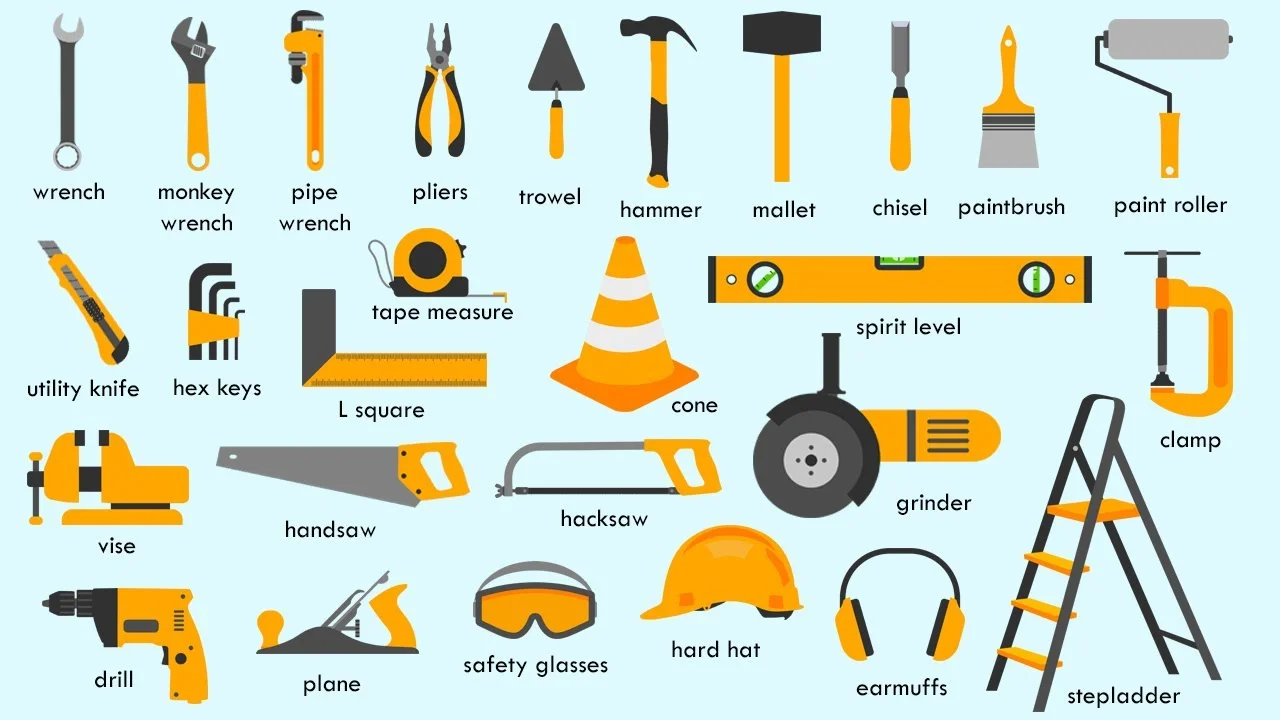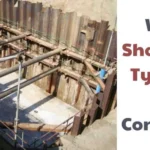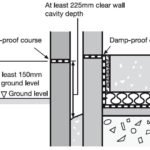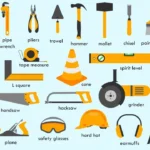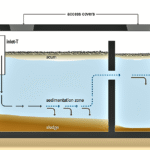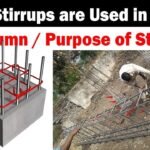Construction work in India relies on a wide range of tools. From simple hammers and measuring tapes to advanced laser levels and heavy machinery, every tool plays an important role in completing a project efficiently. Good quality tools not only improve productivity but also enhance safety and deliver better workmanship. This detailed guide explains the top construction tools used on Indian sites, their uses, categories, costs, and tips for selection. It is designed for contractors, engineers, students, and anyone planning or managing a construction project.
Importance of Construction Tools
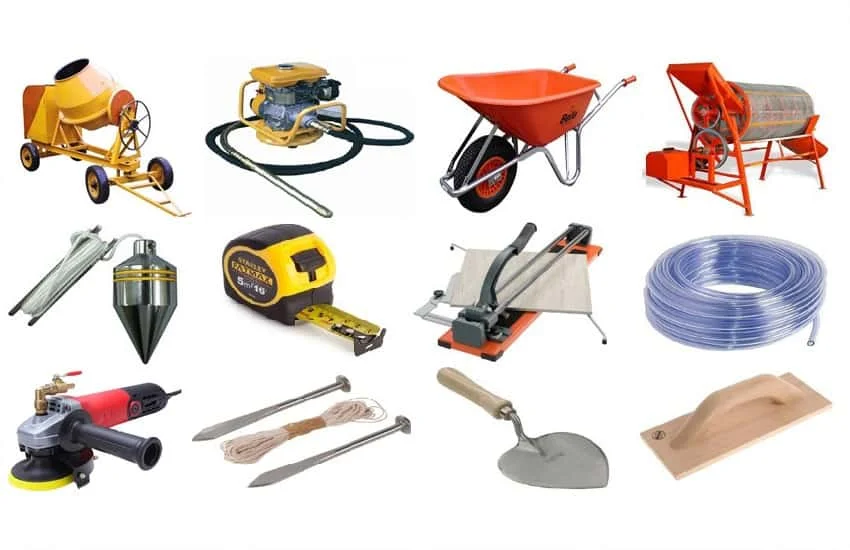
Construction is a complex process that involves multiple stages such as surveying, excavation, concreting, masonry, finishing, and safety management. Each stage requires specific tools and equipment. The correct use of tools improves quality, reduces time, and prevents costly rework. A well-chosen toolset ensures smooth execution of projects, whether it’s a small home renovation or a large infrastructure development. For Indian construction sites, where conditions are often challenging, selecting tools based on durability and service availability is even more critical.
Categories of Construction Tools
Construction tools can be divided into different categories based on their function. The following table provides a quick overview:
| Category | Typical Items |
|---|---|
| Hand tools | Hammer, chisel, spade, trowel, plier, hacksaw |
| Measuring tools | Tape, spirit level, laser level, theodolite |
| Masonry tools | Brick hammer, jointer, mortar pan, pointing trowel |
| Carpentry tools | Handsaw, chisels, plane, screwdrivers |
| Power tools | Angle grinder, drill, concrete vibrator, circular saw |
| Heavy equipment | Excavator, backhoe, bulldozer, roller |
| Compaction & finishing | Plate compactor, tamping rammer, power trowel |
| Concrete & mixing | Concrete mixer, bar cutter, bar bender |
| Safety gear | Helmet, gloves, safety shoes, harness, goggles |
| Surveying tools | Dumpy level, total station, GPS, laser distance meter |
Essential Hand Tools
Hand tools are the most basic yet indispensable part of any construction site. They are affordable, easy to use, and highly versatile.
Common hand tools include:
- Claw hammer and brick hammer: Used for driving nails, breaking bricks, and small demolition work.
- Spade and shovel: Necessary for digging foundations, leveling soil, and mixing materials.
- Pickaxe: Ideal for breaking hard soil, rocks, and compacted earth.
- Trowels: Used by masons for applying and finishing mortar or plaster.
- Plumb bob and spirit level: Essential for checking vertical and horizontal alignments.
- Chisels: Masonry chisels are used for shaping bricks and stones, while cold chisels are used for cutting metals.
- Wrenches and screwdrivers: Required for tightening bolts and assembling site fixtures.
- Measuring tape: Comes in various lengths such as 5m, 10m, and 30m for measuring distances.
When choosing hand tools, it is better to invest in high-quality materials like chrome vanadium steel for longer life and better performance.
Measuring and Layout Tools

Accurate measurements are crucial in construction. Small measurement errors can cause alignment problems and expensive rework. Some commonly used measuring and layout tools are:
- Measuring tape: Available in flexible steel or fiberglass for various distance measurements.
- Spirit level: Ensures surfaces are perfectly horizontal or vertical.
- Laser level: Speeds up the leveling process and improves accuracy, especially in large-scale projects.
- Theodolite and total station: Used for advanced surveying and alignment tasks on big sites.
- Plumb bob and chalk line: Still widely used for simple vertical and straight-line marking tasks.
Modern Indian construction increasingly uses laser distance meters and total stations for higher accuracy and efficiency.
Also Read Construction of Cement Concrete Road – Step-by-Step Process, IRC Guidelines, and Key Components
Power Tools
Power tools are a game-changer on construction sites because they save time and effort. Contractors should choose tools based on workload and brand reliability. Popular brands in India include Bosch, Makita, DeWalt, and Hilti.
Common power tools include:
| Tool | Use |
|---|---|
| Rotary or hammer drill | Drilling holes in concrete and masonry |
| Angle grinder | Cutting steel, stone, and grinding surfaces |
| Circular saw | Cutting timber, plywood, and boards |
| Reciprocating saw | Demolition and cutting in tight spaces |
| Impact driver | Fast screw driving and bolt tightening |
| Concrete vibrator | Removes air pockets in freshly placed concrete |
| Power trowel | Smooths and finishes concrete slabs |
| Demolition breaker | Breaks hard concrete and rock |
Cordless battery-powered tools are becoming more popular on Indian sites due to their portability. However, corded or petrol-powered options are still better for heavy-duty work.
Masonry, Concreting, and Finishing Tools
For construction involving brickwork, plastering, and concreting, specialized tools are needed:
- Concrete mixers: Available in drum or pan types for uniform concrete mixing.
- Wheelbarrows: Used for transporting sand, aggregates, and concrete on site.
- Concrete vibrators: Ensure the concrete is dense and free from air pockets.
- Power trowels and floats: Used for smooth finishing of large slab surfaces.
- Compactors and rammers: Used to compact soil and sub-base layers for durability.
- Chipping hammers: Remove defective concrete or roughen surfaces for better bonding.
Proper use of these tools improves structural strength and extends the life of the structure.
Heavy Equipment and Earthmoving Machines
Large projects require heavy-duty machinery to save time and manpower. Commonly used machines include:
- Excavators: Used for digging deep foundations and handling large amounts of soil.
- Backhoe loaders (JCB): A versatile machine for digging, loading, and transporting materials.
- Bulldozers: Ideal for clearing land and leveling surfaces.
- Motor graders: Used for achieving accurate slopes and road leveling.
- Compactors and rollers: Essential for compressing soil, asphalt, and aggregates.
- Dump trucks: Transport construction materials from one place to another.
- Tower cranes and mobile cranes: Lift and place heavy structural components.
For small and medium projects, renting these machines is often more cost-effective than purchasing them.
Safety Gear and Personal Protective Equipment (PPE)
Safety is a top priority on any construction site. Proper use of safety gear prevents accidents and injuries. Essential PPE includes:
| Safety Item | Purpose |
|---|---|
| Helmet | Protects against falling objects |
| Safety shoes | Prevent injuries to feet, often steel-toed |
| High-visibility vest | Improves visibility on busy sites |
| Gloves | Protects hands from cuts and chemicals |
| Safety goggles | Shields eyes during cutting and grinding |
| Ear protection | Reduces exposure to loud noise |
| Respirators | Protects lungs from dust and fumes |
| Safety harness | Essential for working at heights |
PPE should be regularly checked and replaced when damaged. Worker training on its proper use is equally important.
Small Electrical and Plumbing Tools
Electrical and plumbing work also require specialized tools:
- Pipe wrenches and cutters: For tightening, loosening, and cutting pipes.
- PEX crimp tools: Used for modern plumbing systems.
- Cable pullers and fish tapes: Assist with electrical wiring.
- Insulation resistance testers: Ensure the safety of electrical installations.
- Multimeters: Measure voltage, current, and continuity during setup and repair.
Tips for Buying Construction Tools in India
- Choose tools based on workload – Avoid buying heavy-duty tools for light work.
- Select a consistent battery platform – For cordless tools, sticking to one brand reduces cost.
- Check after-sales service – Brands with better service networks save downtime.
- Look for warranties – Indian construction conditions are harsh, so warranties are important.
- Rent expensive machines – Excavators, cranes, and pavers are better rented unless used daily.
- Inspect used tools carefully – Check for wear, leaks, and test performance before buying.
Approximate Price Range of Common Tools in India
| Tool | Approx. Price (INR) |
|---|---|
| Measuring tape | ₹150 – ₹400 |
| Spirit level | ₹300 – ₹1,200 |
| Corded electric drill | ₹2,500 – ₹8,000 |
| Cordless drill set | ₹6,000 – ₹20,000 |
| Angle grinder | ₹2,000 – ₹8,000 |
| Concrete vibrator | ₹8,000 – ₹50,000 |
| Concrete mixer (small) | ₹10,000 – ₹60,000 |
| Plate compactor | ₹25,000 – ₹1,00,000 |
| Excavator (used) | ₹5 lakh – ₹30 lakh |
| Tower crane rental | ₹10,000 – ₹50,000/day |
Prices vary based on brand, quality, and location. Always compare quotes before purchase.
Maintenance and Storage Tips
- Clean tools after every use to prevent rust and damage.
- Store them in dry, shaded spaces to protect from moisture.
- Lubricate moving parts frequently to maintain smooth performance.
- Replace worn-out parts and blades immediately.
- Maintain a proper inventory and track servicing schedules.
Frequently Asked Questions
Q1. Which brands are best for construction tools in India?
Bosch, Makita, DeWalt, Hilti, Milwaukee, and Stanley are some of the most popular brands due to their reliability and service support.
Q2. Should small contractors buy or rent heavy equipment?
For short-term projects, renting is more economical. Buying makes sense only if equipment is used regularly.
Q3. Are cordless tools suitable for Indian construction sites?
Yes, cordless tools work well for light to medium tasks. For continuous heavy-duty operations, corded or petrol-driven tools are better.
Q4. What basic tools should every mason or carpenter have?
Masons need trowels, brick hammers, levels, and chisels. Carpenters require hammers, chisels, saws, screwdrivers, and measuring tools.
Q5. How do I choose the right concrete vibrator?
Pick based on concrete slump, aggregate size, and pour depth. Internal vibrators are common for slabs and columns.
Conclusion
Construction tools are the backbone of any building project. The right tools improve efficiency, safety, and quality. Start with good hand tools, add essential power tools, and rent heavy machines when needed. For Indian sites, consider local conditions, service availability, and durability before purchasing. Proper maintenance and training ensure long-lasting tools and fewer site accidents. With this complete guide, contractors, engineers, and students can better plan their equipment needs and manage projects more effectively.
